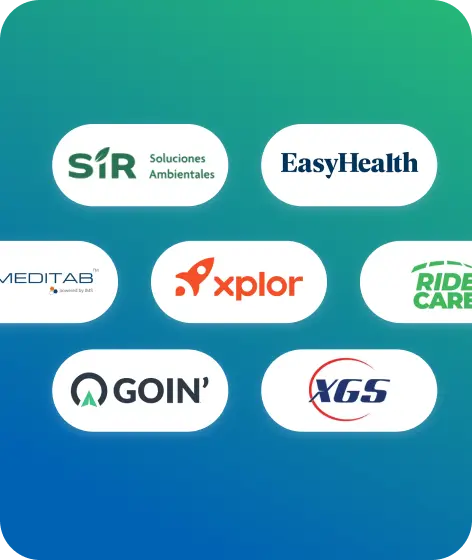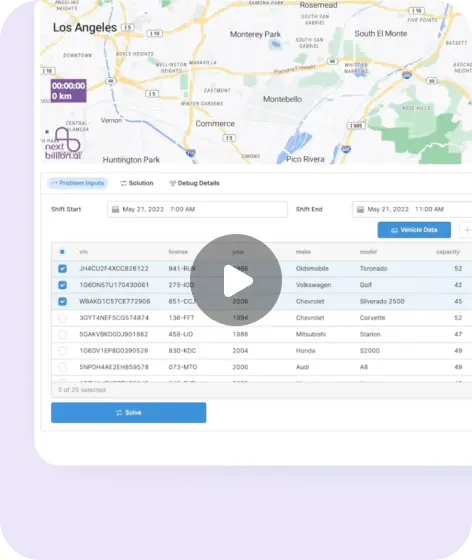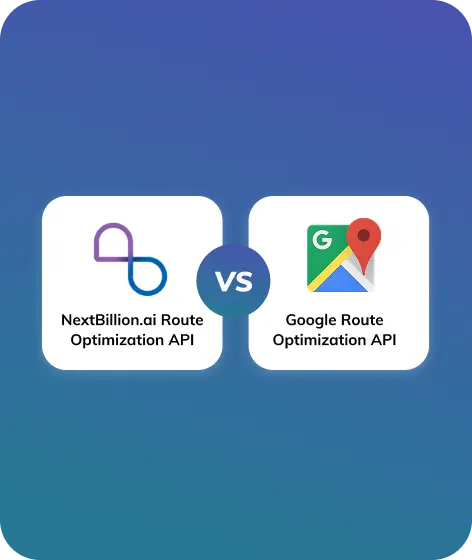
Table of Contents
In the modern logistics and transportation sector, maintaining fleet compliance is more difficult than ever. Fleet operators are required to keep accurate records, guarantee driver compliance, and be audit-ready at all times due to stringent Hours of Service (HOS) and Electronic Logging Device (ELD) rules. However, a lot of people continue to use antiquated or manual techniques that are labor-intensive, prone to mistakes, and challenging to scale.
Modern fleets are using AI-powered compliance solutions to remain ahead of the competition. By automating crucial processes like log audits, violation detection, and driver performance monitoring, these systems provide real-time insights that aid in averting problems before they start.
Leading the way are businesses like NextBillion.ai, which offer clever solutions that easily interface with current systems, boost operational effectiveness, and make compliance management easier at scale. We will discuss real-world success stories, examine how AI is changing HOS and ELD compliance, and emphasize the main advantages of taking a more intelligent, data-driven approach in this blog.

Understanding HOS & ELD Requirements
Hours of Service (HOS) and Electronic Logging Devices (ELDs) are two crucial regulatory elements that must be understood in order to manage fleet compliance. These serve as the cornerstone of accountability and safety in commercial transportation, with the goals of avoiding driver weariness and guaranteeing impartial, consistent documentation.
What are Hours of Service (HOS) Rules?
Both the overall number of hours on duty per week and the number of driving hours that are permitted each day and week are restricted by the Hours of Service rule. Restrictions on driving limits or duty cycles include:
14-hour limit
Drivers can work up to 14 hours in a single day, with a maximum of 11 hours spent behind the wheel. After eight hours of driving, they must take a 30-minute rest. Drivers can complete off-duty, sleeper berth, and/or other non-driving tasks to meet the 30-minute break requirement. A motorist is required to take a minimum of ten hours off duty after reaching their on-duty limit.
11-hour limit on driving
During a 14-hour shift, a driver can only drive for a maximum of 11 hours.
60/70-hour cap
On-duty time is limited by HOS regulations to 60 hours during a seven-day period and 70 hours during an eight-day period. Accordingly, drivers are prohibited from operating a motor vehicle after accumulating 60 or 70 hours of on-duty time in seven or eight consecutive days, respectively.
34-hour restart
Drivers can reset their 60- or 70-hour clocks to zero by following the 34-hour restart requirement. In order to benefit from the rule, drivers must take at least 34 hours off duty in a row, including two days off between 1:00 and 5:00 in the morning.
Rest periods
After eight hours of nonstop driving, drivers must take a 30-minute break. At a truck stop or other rest facility, rest breaks might be recorded as either off-duty time or as time spent in the sleeper berth.
Sleeper berth provision
Truck drivers can use a sleeper berth in their vehicle to divide their mandatory 10-hour off-duty period into two halves thanks to the sleeper berth option. Drivers may divide the sleeping berth time into two periods, such as an 8/2 or 7/3 split, but they must spend at least seven or eight hours in the sleeper berth. This is a straightforward explanation of the 8/2 and 7/3 split:
- 8/2 split: Drivers can take two hours off-duty (which could be off-duty, in the sleeper berth, or both) and eight hours in the sleeper berth (consecutive and uninterrupted).
- 7/3 split: Drivers are allowed to take three hours off-duty (which may be off-duty, in the sleeper berth, or both) and seven hours in the sleeper berth (consecutive and uninterrupted).
Electronic Logging Devices (ELDs): What Are They?
A computerized system that automatically logs a driver’s driving time, engine hours, vehicle movement, position, and other details is called an electronic logging device.
ELDs’ primary duties include:
- Errors related to paper logs are decreased via automatic data capture.
- Fleet managers can keep an eye on compliance throughout the fleet thanks to real-time visibility.
- Audit readiness: Using standardized electronic data makes reporting and inspection easier.
Although ELDs help close the gap between operational control and legal requirements, handling and analyzing the data they provide can still be very difficult, particularly for large or diverse fleets.
Why It's Hard to Comply with HOS and ELD
HOS and ELD compliance is still difficult despite explicit standards because of:
- Missing logs or errors in manual data entry.
- Ambiguous rule exclusions, including personal conveyance allowances or short-haul exemptions.
- Driver misinterpretation or intentional log fabrication.
- lengthy audits and roadside checks.
Because of these problems, compliance becomes a daily operational difficulty in addition to a legal obligation. Automation, insight, and real-time alerting are brought to an area that has historically been handled by manual review and after-the-fact corrections by AI-powered solutions.
Difficulties The challenges that fleet managers encounter
Experts predict that fleet operations will only get more costly. Regrettably, fleet costs will not only continue to increase but will also pick up speed. The cost of buying a car will continue to rise as fuel prices rise, and maintenance expenses will rise as a result of longer replacement schedules.
Although the majority of the present market factors, such as high fuel prices, inflation, and price volatility, are out of any fleet enterprise’s control, they will still require careful planning and budgeting in order to be overcome.
1.Acquisition and life cycle management of vehicles:
Because of the high expenses of taxes, insurance, and maintenance, fleet managers frequently encounter difficult circumstances while purchasing automobiles. Along with staying up to date with changing technology and regulatory standards, they should also consider load capacity, downtime redundancy, and utilization rates.
2. Make the switch to digital structures:
Using antiquated manual techniques can result in inefficiencies, error logs, and underutilized analytical skills. Implementation expenses and opposition to new technology adoption further complicate the shift.
3. Maintenance and downtime:
Operations might be disrupted and fuel consumption raised by unplanned downtime brought on by subpar maintenance procedures. Fleet managers also struggle with safety control compliance and warehouse management for replacement components.
4. Motive force training and driver management:
Although experienced drivers are uncommon, operating a vehicle with them might offer difficulties. Other tasks include keeping an eye out for risky driving practices, guaranteeing compliance, and filling in training gaps.
5. Fuel Control & Management:
Controlling gasoline use is a complicated process that is influenced by a number of variables, including maintenance, vehicle economy, and usage patterns. Fleet managers must keep an eye on additional factors as the demand for electric vehicles increases.
6. Data Overload:
A large number of statistics produced by fleet activities may not be useful. Examining these documents takes time and is likely to be missed.
How AI is Transforming HOS & ELD Management

The way fleet operators handle compliance is being drastically changed by artificial intelligence (AI), especially with regard to Electronic Logging Device (ELD) and Hours of Service (HOS) rules. Manual log reviews, paper documentation, and reactive issue resolution were formerly necessary for HOS compliance; these processes were laborious and prone to human mistake.
These days, automation, predictive analytics, and proactive compliance management are made possible by AI.
1. Real- Time Violation Identification
Real-time driver record monitoring by AI-powered technologies can automatically identify any HOS infractions before they happen. Fleet managers get instant warnings about violations rather of learning about them through an audit or inspection, which enables prompt remedial action and helps prevent fines and out-of-service penalties.
2. Using Predictive Analytics to Reduce Risk
AI is able to anticipate issues rather than just identify them. AI models can predict when a driver is likely to go over their HOS restrictions or experience delays by examining past driver behavior, road conditions, and route patterns. This lowers risk and enhances operational flow by enabling managers to proactively re-assign loads or modify timetables.
3. Automated Error Correction and Log Auditing
Manually going over hundreds of drivers’ logs is ineffective and prone to mistakes. AI tools can audit logs automatically, identify anomalies or inconsistencies, and even suggest corrections. This enhances audit readiness and guarantees more accurate reporting.
4. Smart Driver Guidance
AI can assist drivers in learning compliance best practices by evaluating ELD data together with driving trends. AI offers data-backed feedback that enhances safety and compliance with HOS requirements, whether it is through break time optimization or the reduction of needless idle time.
5. Smooth Integration with Other Systems in the Fleet
Fuel monitoring tools, GPS, dispatch systems, and telematics can all be integrated with contemporary AI-driven platforms. Better compliance management in context is made possible by this comprehensive perspective of operations, which takes into account real-time factors like driver fatigue, traffic delays, route modifications, and vehicle health.
6. Improved Audit Readiness and Reporting
By producing organized, on-demand compliance reports that satisfy FMCSA regulations, AI streamlines the reporting process. This lessens the administrative load during audits or inspections and shows a transparent, consistent record of compliance actions.
How NextBillion.ai Solves HOS and ELD Challenges
Nextbillion.ai integrates real-time data and optimization tools with Samsara, Motive and Geotab to tackle fleet management compliance issues. This enables companies to control driver hours of service (HOS), optimize routes based on practical limitations, and proactively spot possible compliance problems. A closer view is provided here:
1. Real-time Data Access via Samsara Integration:
In order to handle fleet compliance issues, NextBillion.ai uses Samsara to manage routes and cars directly within the Samsara dashboard. It also makes use of the Samsara API for real-time GPS monitoring and route optimization. Through this interaction, NextBillion.ai can efficiently manage complex routes, maintain a list of vehicles in NextBillion.ai based on Samsara data, and generate routes in Samsara when dispatched.
2. Motive Integration Data Integration:
In order to obtain information on assets, drivers, and operations, NextBillion.ai probably integrates with Motive’s platform. HOS and other compliance standards are tracked using Motive’s compliance capabilities, including as ELD (Electronic Logging Device) data.
By using the connected data, NextBillion.ai may produce reports and alerts that assist companies in proactively identifying and resolving compliance-related concerns.
3. Geotab
By improving data management and route optimization for fleet operations, NextBillion.ai and Geotab work together to overcome compliance issues. This connection guarantees accurate route planning and adherence to driving time constraints, allowing enterprises to comply with requirements such as Hours of Service (HOS). According to NextBillion.ai, features like constraint handling and re-optimization are essential for fulfilling regulatory standards and are offered by the route optimization API that is linked with Geotab’s platform.
Simplifying Fleet Compliance with AI-Powered Solutions
Fleet compliance has grown more complicated in today’s hectic logistics environment, particularly with regard to Hours of Service (HOS) and Electronic Logging Device (ELD) rules. Conventional approaches frequently result in operational inefficiencies, more administrative work, and noncompliance. However, real-time monitoring, automated audits, predictive risk analysis, and enhanced driver performance are all made possible by AI-powered systems that are revolutionizing compliance management.
Fleets can guarantee audit readiness, enhance safety ratings, expedite reporting, and drastically cut down on violations by utilizing AI. The secret to long-term success is selecting the best solution, one that scales with your operations, provides intelligent insights, and integrates smoothly with your current systems.
At the forefront of this revolution is NextBillion.ai. NextBillion.ai enables companies proactively monitor compliance, optimize driver schedules, and guarantee that every mile is both productive and compliant with its sophisticated routing and AI-powered fleet management capabilities.
About Author
Divya Nair
Divya is a dedicated Technical Content Writer with experience of two years in the industry. Her expertise spans various forms of writing, including blogs and website content.








